SAP High Availability
Filter By
Browse By
- SAP Analytics and AI
- SAP Application Development and Integration
- All SAP Application Development and Integration
- SAP ABAP
- SAP ABAP Development Tools
- SAP ABAP Test Cockpit
- SAP API Management
- SAP BAPI
- SAP Basis
- SAP BRF
- SAP Business Application Studio
- SAP CMS
- SAP Design Studio
- SAP Development Tools
- SAP DevOps
- SAP EAI
- SAP EDI
- SAP Extension Suite
- SAP Fiori
- SAP Fiori Elements
- SAP Integration Suite
- SAP Low Code Application Development
- SAP Low Code Automation
- SAP Netweaver
- SAP Release Management
- SAP UI5
- SAP Web Application Server
- SAP Web IDE
- SAP Business Process Management
- SAP Center of Excellence
- SAP CIO
- SAP Customer Experience
- SAP Data and Data Management
- All SAP Data and Data Management
- SAP BW
- SAP BW/4HANA
- SAP Crystal Reporting
- SAP Data Archiving
- SAP Data Center
- SAP Data Governance
- SAP Data Integration
- SAP Data Migration
- SAP Data Quality
- SAP Data Services
- SAP Data Strategy
- SAP Data Visualization
- SAP Data Warehouse Cloud
- SAP DMS
- SAP Document Control
- SAP EIM
- SAP ETL
- SAP ETL Tools
- SAP HANA
- SAP HANA Administration
- SAP HANA Deployment Infrastructure
- SAP HANA Studio
- SAP Master Data
- SAP Master Data Governance
- SAP MDM
- SAP Enterprise Architect
- SAP Enterprise Asset Management
- SAP ERP
- SAP Finance
- All SAP Finance
- SAP Accounting
- SAP AR AP
- SAP Asset Accounting
- SAP Billing Systems
- SAP BPC
- SAP BRIM
- SAP Cash Management
- SAP Central Finance
- SAP Controlling
- SAP COPA
- SAP Cost Center Accounting
- SAP e-invoicing
- SAP FICO
- SAP Finance Automation
- SAP Financial Closing Cockpit
- SAP Financial Consolidation
- SAP Financial Planning
- SAP FX Risk
- SAP General Ledger
- SAP Global Tax Management
- SAP Hyperion
- SAP Order to Cash
- SAP Payment Processing
- SAP Profitability Analysis
- SAP Rebate Management
- SAP S/4HANA Finance
- SAP Universal Journal
- SAP Governance Risk and Compliance
- SAP Human Capital Management
- SAP Intelligent Technologies
- SAP Platform and Technology
- All SAP Platform and Technology
- SAP Business Technology Platform
- SAP Cloud Connector
- SAP Cloud Integration Platform
- SAP Cloud Migration
- SAP Cloud Platform
- SAP Cloud Providers
- SAP Cloud Strategy
- SAP Container Platform
- SAP Digital Asset Management
- SAP Digital Integration Hub
- SAP Digital Signature
- SAP HANA Enterprise Cloud
- SAP HEC
- SAP Hyperscalers
- SAP Infrastructure
- SAP Messaging
- SAP Smart Forms
- SAP Quality and Testing
- SAP Security
- SAP Spend Management
- SAP Supply Chain Management
- All SAP Supply Chain Management
- SAP APO
- SAP Asset Management
- SAP Business Network
- SAP Digital Manufacturing Cloud
- SAP Digital Twin
- SAP EWM
- SAP IBP
- SAP Inventory Management
- SAP Label Printing
- SAP Logistics
- SAP Manufacturing
- SAP Manufacturing Automation
- SAP MES
- SAP MII
- SAP MM
- SAP MRO
- SAP MRP
- SAP Order Management
- SAP Plant Maintenance
- SAP PLM
- SAP Production Planning
- SAP S&OP
- SAP SD
- SAP SPM
- SAP Supply Chain Planning
- SAP Track and Trace
- SAP Transportation Management
- SAP System Administration
What Is High Availability?
High availability (HA) is the ability of a system to operate continuously without failing for a designated period of time. HA ensures a system meets an agreed-upon operational performance level. Availability is expressed as a percentage:
- 99% = 87.6 hours of annual downtime
- 9% = 8.76 hours of annual downtime
- 99% = 52 minutes of annual downtime
- 999% = 5 minutes of annual downtime.
High availability usually equals 99.999% or better. HA is achieved by eliminating single points of failure and providing the ability to rapidly resume operations after a system outage with minimal business loss.
What Is SAP High Availability?
SAP has put in place plans and procedures that enable SAP ERP and other critical systems to keep on running. A high-availability solution for SAP needs to achieve four core goals:
- Minimize downtime
- Eliminate data loss
- Maintain data integrity
- Enable flexible configuration.
For example, SAP offers the Standalone Enqueue Server 2 (ENSA2) as a component of Application Server ABAP to provide high availability. It supports two-node and multi-node clusters, which enables switchover to ENSA2 to ensure continued system availability. In addition, SAP High Availability Failover enables SAP Adaptive Server Enterprise (SAP ASE) to work in a cluster of servers in a specific configuration, enabling failover and failback on servers.
Further Resources for SAPinsiders
SAP High Availability Best Practices in AWS. In this webinar, Brett Barwick, Senior Software Engineer of SIOS Technology Corp., and Tamara Astakhov, Senior Partner, Solution Architect for Big Data & Analytics, AWS, discuss best practices for SAP high availability and how to achieve near-zero downtime.
The 15 Most Overlooked Items in Planning for High Availability and Disaster Recovery. In this article, Kurt Bishop, a retired member of SAP America’s Technical Consulting Team, offers advice on how to avoid costly mistakes by sharing the 15 most overlooked items — including the cost of downtime, security issues, loss of personnel and systems, and the importance of testing — and discussing how to incorporate them into recovery planning.
Architecting a High Availability SAP NetWeaver Infrastructure: Strategies for Ensuring a Successful, Cost-Effective Implementation. In this article, Matt Kangas, U.S. Product Manager for SAP NetWeaver Application Server at SAP Labs, provides an overview of HA basics and then discusses the technical details of an HA setup with SAP NetWeaver, including topics such as architectural single points of failure and ways to isolate and protect such failure points.
Vendors that can assist SAP customers with high availability include: AWS, Google Cloud, Microsoft, Managecore, Red Hat, Saberpoint, SIOS, SUSE, Virtustream, and Zebra Technologies.
865 results
-

Improve Your Company’s Revenues with ATP in Sales Using SAP SD
Published: 30/December/2017
Reading time: 22 mins
Learn about the processes involved in sales using Available-to-Promise (ATP) functionality. Read details about the main master data to be maintained in the system along with the main customizing settings available for this solution. Key Concept The Available-to-Promise (ATP) quantity is calculated from the warehouse stock, the planned inward movements of stock (production orders, purchase...…
-

Streamline Your Company’s Production Rates with ATP Using SAP PP
Published: 29/December/2017
Reading time: 19 mins
Learn about the processes involved in production using Available-to-Promise (ATP) functionality. Read about the master data to be maintained in the system along with the main customizing settings available for this solution. Key Concept In SAP Production Planning (PP) the Available-to-Promise (ATP) check is carried out for the components of the main material. SAP Production...…
-

Best Practices for SAP High Availability in AWS
Published: 28/May/2021
Reading time: 5 mins
The global marketplace and its supply chains are complex and volatile. Companies rely on their SAP ERP systems to manage those dynamics and engage with their suppliers and customers. While on-premise control of your SAP landscape and data centers provides advantages, it may be time to consider transitioning to the AWS cloud. The question is,…
-
-

Configure Capable-to-Promise for Both External and Internal Demands
Published: 15/February/2016
Reading time: 26 mins
Learn how to configure Capable-to-Promise in SAP Global Available-to-Promise (GATP) in a manufacturing environment for both external as well as internal demands. Understand the various configuration aspects of both GATP and Production Planning (PP) /Detailed Scheduling (DS). Key Concept Production can be directly triggered through a Capable-to-Promise check within the SAP Global Available-to-Promise (GATP) module...…
-

Use SAP Solution Manager’s Extensive Reporting Capabilities to Ensure Consistent Performance Across Your System Landscape Through Proactive Monitoring
Published: 15/March/2008
Reading time: 24 mins
SAP/Solution Manager Learn about SAP Solution Manager 4.0’s reporting options and how to use them to ensure consistent performance across your system landscape. Key Concept SAP Solution Manager 4.0 includes a wide range of reporting options for generating technical and administrative information about your system landscape, including SAP EarlyWatch Alert Reporting, Service Reporting, EarlyWatch Alert...…
-

3 Steps to Identify Missing Parts and Evaluate Shortages for Production Orders
Published: 09/November/2010
Reading time: 11 mins
The availability of required parts becomes more critical as you get closer to starting your production run. Learn three steps to easily update your SAP ERP system with the latest availability of parts required for production, identify missing components, check expected receipts, and expedite procurement. Key Concept Components that are not available in sufficient quantities...…
-

Use Document Types for Budget Availability Control in SAP PS
Published: 30/January/2013
Reading time: 10 mins
See how, why, and where you can configure budget availability control based on document types to improve your project controlling efficiency with a standard SAP system. Key Concept Budget availability control in the Managerial Accounting (CO) and Project System (PS) modules is a standard SAP functionality that automates budget control through warnings and error messages....…
-
-

Accurate Order Promising through Global ATP in a Consolidation Environment
Published: 25/August/2014
Reading time: 29 mins
Learn how to implement rules-based available-to-promise (ATP) in a consolidation scenario including the use of multi-level ATP. Key Concept Fixed pegging is the process of establishing the relationship of a receipt document to the requirement document it fulfills. This linkage is not broken when receipts or requirements are rescheduled in time or through a planning...…
-

Take Control of Order Confirmations with Backorder Processing in APO
Published: 15/March/2007
Reading time: 36 mins
Find out how the sort profile and filter type affect backorder processing (BOP). In this example based on a real-world scenario, see how the author developed a workaround that allowed the company to use the material availability date as a sort criterion for BOP. Key Concept Backorder processing (BOP) is a critical step in sales...…
-

How Rights Inventory Management Works in SAP IPM
Published: 11/June/2012
Reading time: 23 mins
See how an SAP system handles the media industry’s need to manage intellectual property and to avoid the conflicts that can arise when an intangible product is licensed in multiple ways. Key Concept SAP Intellectual Property Management (SAP IPM) is part of the industry-specific offering SAP for Media. It sits on top of SAP CRM....…
Featured Experts
-

Akash Kumar
Associate General Manager, HCL
Become a Member
Unlimited access to thousands of resources for SAP-specific expertise that can only be found here.
Upcoming Events
Related Vendors
Your request has been successfully sent

